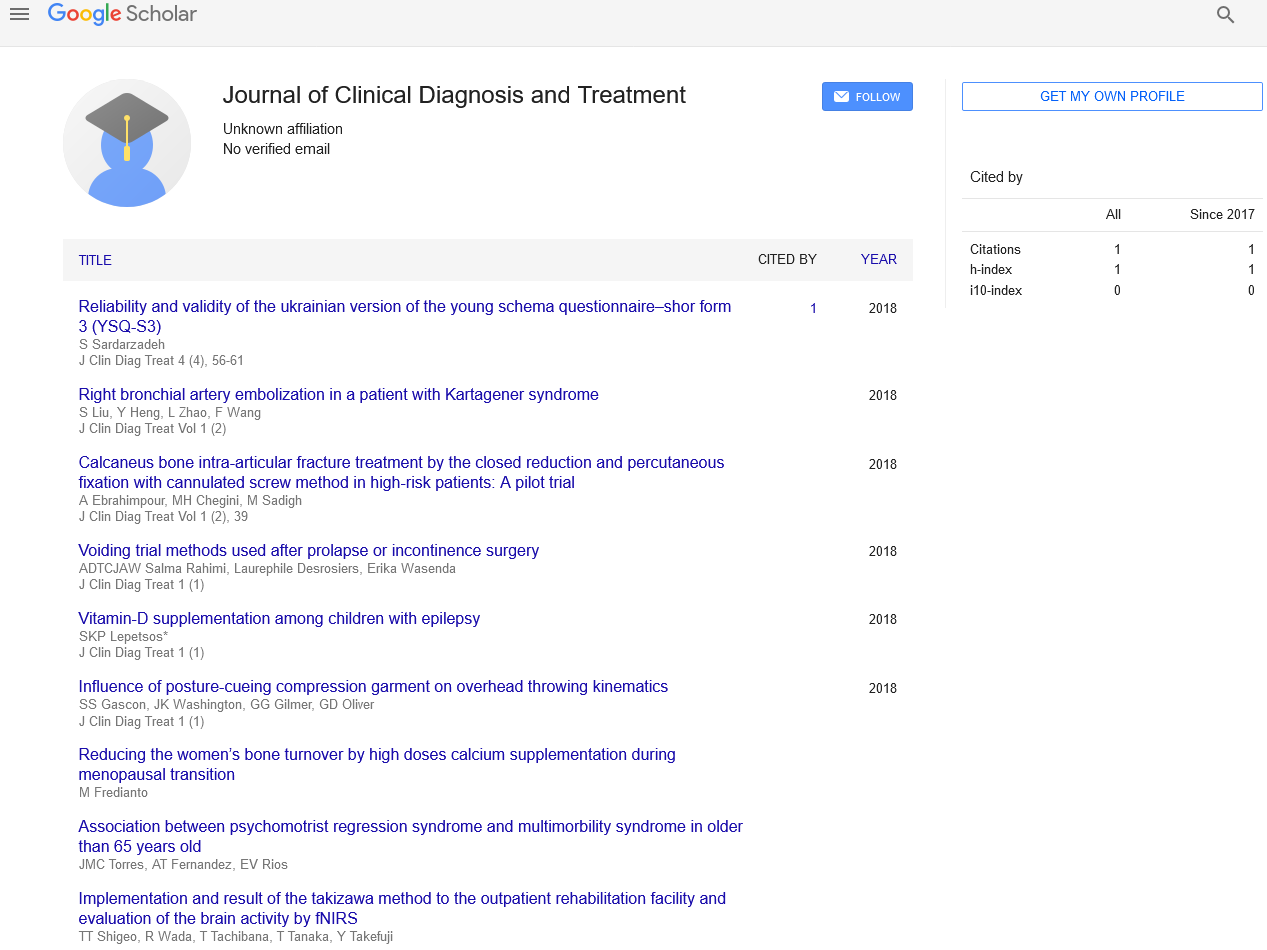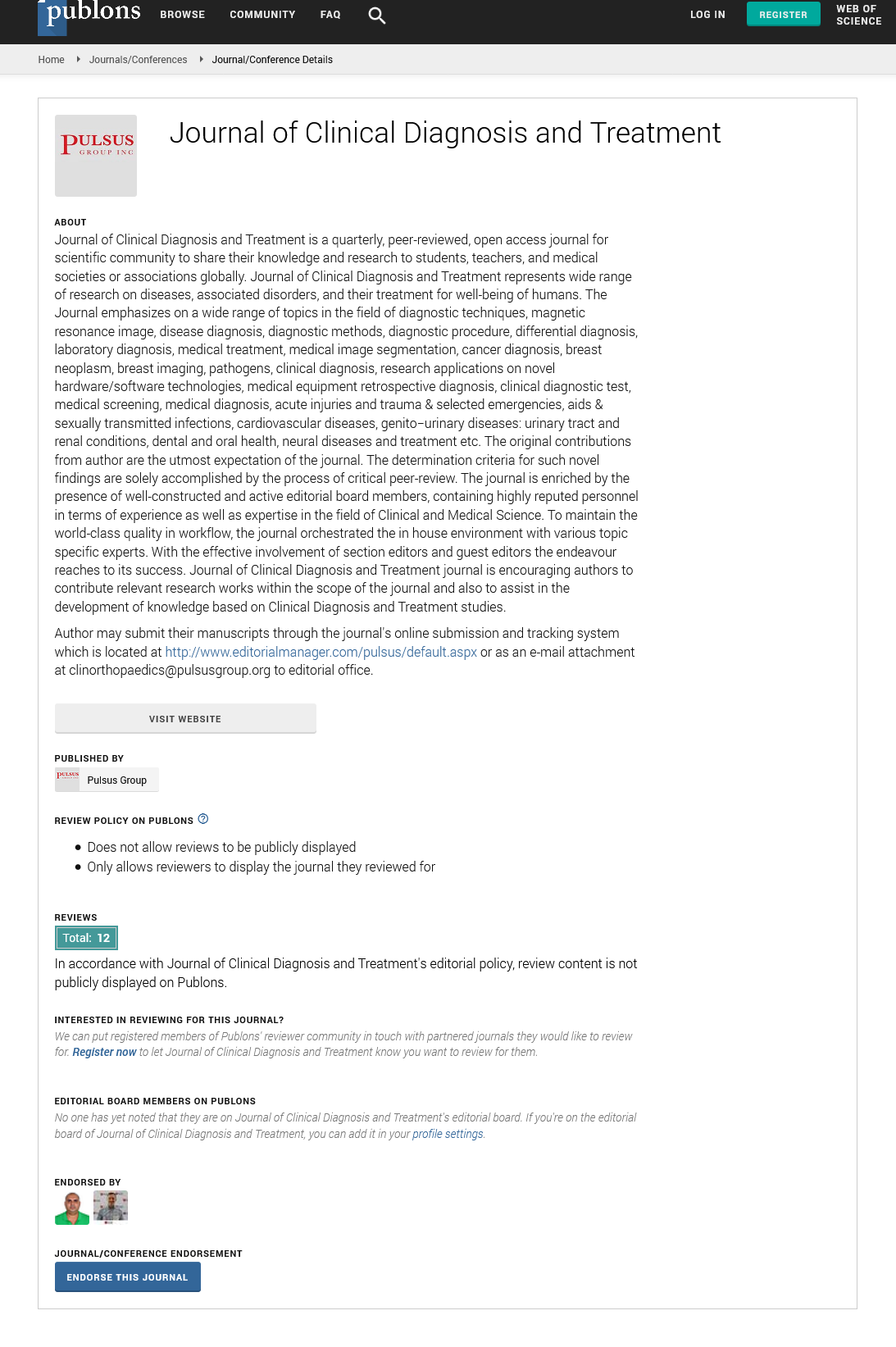Dental self-evaluation and oral hygiene routines
Received: 02-May-2022, Manuscript No. PULJCDT-22-5313; Editor assigned: 04-May-2022, Pre QC No. PULJCDT-22-5313(PQ); Accepted Date: May 20, 2022; Reviewed: 17-May-2022 QC No. PULJCDT-22-5313(Q); Revised: 18-May-2022, Manuscript No. PULJCDT-22-5313(R); Published: 27-May-2022, DOI: 10.37532/puljcdt.22.4(3).16-17
Citation: Editorial office, Journal Of Clinical Diagnosis and Treatment, UK
This open-access article is distributed under the terms of the Creative Commons Attribution Non-Commercial License (CC BY-NC) (http://creativecommons.org/licenses/by-nc/4.0/), which permits reuse, distribution and reproduction of the article, provided that the original work is properly cited and the reuse is restricted to noncommercial purposes. For commercial reuse, contact reprints@pulsus.com
Abstract
Education is a key factor in advising individuals on dental hygiene. Higher educated people are more responsible when it comes to their eating habits and dental hygiene requirements general health is closely related to oral health. Maximum oral functionality requires healthy tooth-supporting tissues and cavities free of disease. Numerous types of research have looked into the relationship between dental healthcare professionals' attitudes and the advancement of their patient's dental care.
Keywords
Dental cavities; Gingivitis; Self-evaluation; Dentition
Introduction
Demographic and socioeconomic factors, as well as the usage of healthcare services, influence oral health issues such as tooth decay, periodontal disease, and tooth loss. These health issues have a detrimental effect on a person's everyday life because they cause functional challenges, chewing and talking difficulties, and social difficulties, such as dissatisfaction with one's appearance, difficulty fitting in with society, and difficulty getting a job. An individual's general health is closely related to oral health. Maximum oral functionality requires healthy tooth-supporting tissues and cavities free of disease. Socioeconomic position, education, and accessibility to medical facilities are important elements that have a substantial impact on oral health due to the interaction of many factors.
Neglecting oral hygiene can lead to dental cavities, gingivitis, and eventual tooth loss requiring an artificial tooth replacement. The majority of people think that loss and eventual replacement are inevitable, which makes them less likely to practice excellent dental hygiene. Education is a key factor in advising individuals on dental hygiene. Higher educated people are more responsible when it comes to their eating habits and dental hygiene requirements. They are more conscious of the negative effects and issues brought on by poor dental hygiene. By reducing the number of teeth with open carious cavities, periodontal disease, or inadequate restorations that cause pain and affect comfort, biting, and attractiveness, dental exams may improve the natural history of oral disorders. To minimize tooth loss and enhance health and quality of life in this age group, learning about adults' oral health and how it affects their lives could help to lessen the social and physical effects of oral health issues. Future population health will be affected by this, given the rise in life expectancy. Additionally, dental exams may have a calming and educating effect, boosting people's confidence in their oral health; both of these effects-improving the natural course of oral diseases and Educating/calming-would raise the likelihood of a favorable selfevaluation of oral health. The individual's perception of their oral health seems to be influenced by the number of carious teeth – the greater the number of carious teeth, the worse self-perceived oral health is. Toothache, mostly due to caries, also influences how individuals perceive their oral health. The main reason for tooth loss is caries, and the number of missing teeth also influences self-perceived oral health. Despite having sufficient knowledge and awareness of it, certain research found that dental professionals do not always practice proper dental health. Personal behavior is a reflection of a person's values, life lessons, and experience.
Numerous types of research have looked into the relationship between dental healthcare professionals' attitudes and the advancement of their patient's dental care. Therefore, the clinical condition of the dentition, particularly its history concerning caries experience, either due to an open cavity, which raises the risk of pain, or because the tooth loss, lowering the chewing ability and self-image satisfaction, is associated with self-perceived oral health.
The primary purpose of dental care is to support the preservation of a natural dentition throughout life, as well as all physiological and psychological processes. Longer dental checkup intervals appear to be just as advantageous as shorter intervals for maintaining a natural dentition. Similar to POH, routine dental checkups once every two years seem to be consistent with large proportions of people with good POH (95.9%), in contrast to 84.9% who attend only when in difficulties. POH is strongly associated with psychosocial functioning. People could be recommended to visit the dentist for a regular checkup once every two years or more regularly to maintain a natural functional dentition and a positive self-perception of oral health. However, longitudinal research must be carried out, particularly those in various groups that were primarily focused on the SE features and oral clinical situations, to acquire more reliable scientific data to inform public policies.






